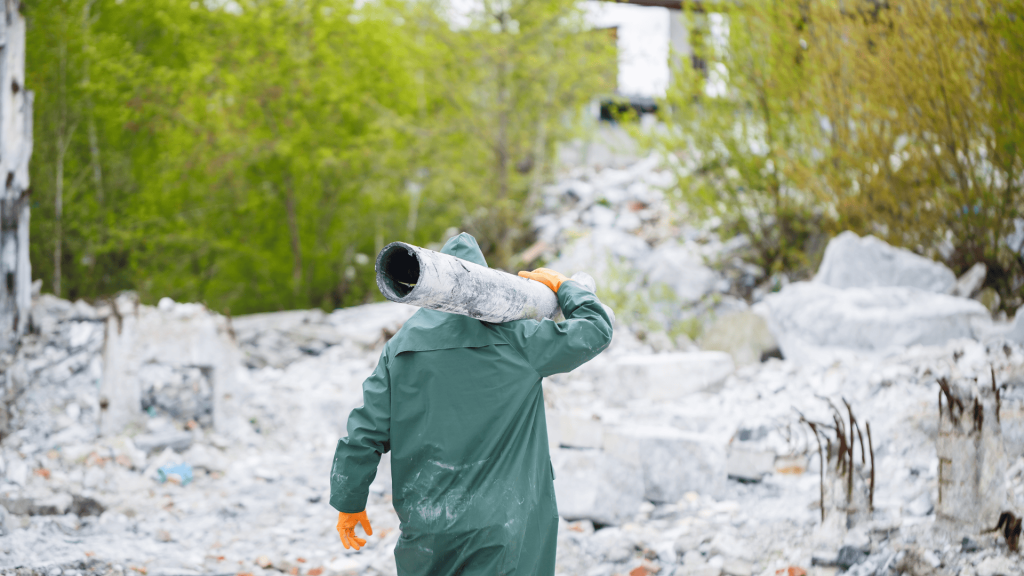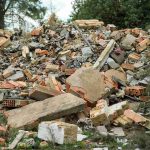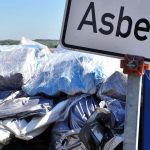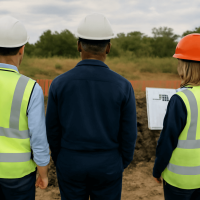Asbestos was once widely used in construction and manufacturing for its fire-resistant and insulating properties. However, it is now well-known that asbestos exposure poses serious health risks. Despite being banned or restricted in many countries, asbestos still exists in older buildings and infrastructure. This is why safe asbestos removal and proper asbestos disposal are critical for protecting both human health and the environment.

The Health Risks of Asbestos Exposure
When asbestos-containing materials are disturbed or deteriorate over time, they release tiny fibers into the air. These fibers, when inhaled, can become lodged in the lungs and cause severe health issues. Some of the most serious asbestos-related diseases include:
- Asbestosis: A chronic lung disease that causes scarring of lung tissue.
- Mesothelioma: A rare and aggressive cancer affecting the lining of the lungs or abdomen.
- Lung Cancer: Often more severe in individuals who smoke and have been exposed to asbestos.
These conditions often develop years or even decades after exposure, making early prevention and careful handling of asbestos essential.
Why Safe Removal Matters
Many older homes, schools, and commercial buildings still contain asbestos in insulation, roofing, tiles, and pipe coverings. If these materials are not properly identified and safely removed, they can pose a silent threat to anyone in the building.
Safe asbestos removal involves:
- Identifying asbestos-containing materials through professional inspection.
- Hiring certified asbestos removal specialists.
- Using proper protective gear and containment procedures.
- Ensuring that the materials are not broken or damaged during removal, which can release harmful fibers.
Without these precautions, there is a high risk of contaminating the air and putting occupants and workers in danger.
The Importance of Proper Asbestos Disposal
Equally important as the removal process is asbestos disposal. Simply throwing asbestos waste into regular garbage or landfill sites is not only dangerous but often illegal. Improper disposal can lead to further contamination and long-term environmental damage.
Proper asbestos disposal includes:
- Sealing asbestos waste in clearly labeled, leak-proof containers.
- Transporting it to licensed hazardous waste facilities.
- Following local and national regulations for handling toxic materials.
Professional asbestos disposal services ensure that all waste is treated with the necessary care to prevent future risks.
Legal and Environmental Responsibility
Governments around the world have strict regulations concerning asbestos handling and disposal. Property owners, contractors, and facility managers have a legal responsibility to comply with these laws to avoid penalties and lawsuits. Beyond legal obligations, there is also an ethical duty to ensure that asbestos disposal does not harm public health or pollute the environment.
When to Call a Professional
If you suspect your building may contain asbestos, do not attempt to remove it yourself. DIY asbestos removal is highly risky and illegal in many areas. Instead, contact a licensed asbestos abatement company to conduct a thorough inspection and manage the safe removal and disposal process.
Asbestos may no longer be used in modern construction, but it continues to pose a serious health threat where it still exists. Safe asbestos removal and proper asbestos disposal are vital to preventing life-threatening diseases and maintaining a safe living or working environment. Whether you’re a homeowner, business owner, or contractor, always prioritize health and safety by following the correct procedures for handling asbestos.
Taking proactive steps to address asbestos risks not only protects your health but also helps safeguard the well-being of future generations. Remember, prevention is always better than cure, so don’t hesitate to seek expert guidance and ensure a safe and healthy environment for all.
With proper awareness, education, and the right safety measures, we can reduce the risks associated with asbestos exposure. Always consult with certified professionals to ensure that asbestos is handled and removed in compliance with all safety regulations, ensuring peace of mind for everyone involved.







